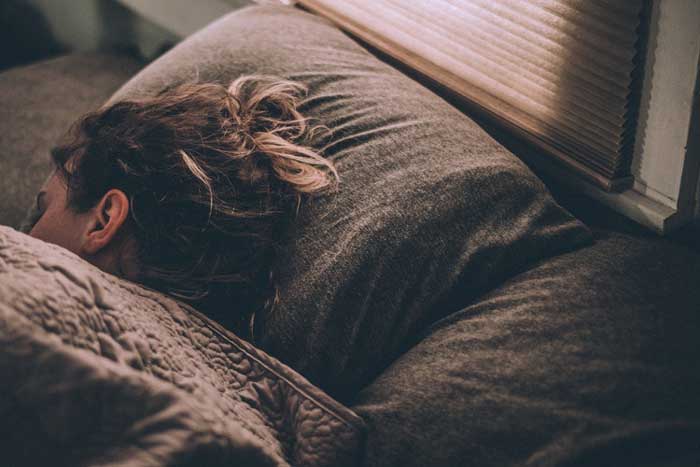Healthy Sleep Rules
In what position do you need to sleep – on your side, on your belly or on your back?
Here are some tips for choosing the right pillow and mattress, recommendations for fighting insomnia and snoring.
How to learn to sleep properly?
Created over many years, the habit of sleeping in the wrong position or the ability to fall asleep on the couch solely in front of the TV are serious problems that need to be addressed. It is likely that in the early days the correct position for sleep will seem extremely uncomfortable to you, but you will get used to it gradually.
Choosing the right (and comfortable) position for sleep, first, make sure that the mattress and pillow are selected correctly. After that, try to sleep on the back – if this sleep does not prove comfortable even with two small pillows (under your knees and lower back), sleep on your side.
Which side is better to sleep on?
If you sleep on your side or on your back, you need a not very high pillow and a mattress that can take the shape of the body and absorb the load.
Sleeping on your side is one of the two recommended sleep positions suitable for almost any person. However, it is important to know which side you should sleep on. Sleeping on the right side can provoke heartburn, whereas sleeping on the left side reduces the production of acid in the stomach and is useful for the reflux disease.
The most correct position of the hands while sleeping on the side is stretching them along the body. Putting your hands under the pillow you can provoke pain in the neck and an unpleasant feeling of numbness. If you do not stretch your arms, hug another small pillow.
How to sleep properly?
Despite the fact that sleeping on the belly facilitates digestion and helps to get rid of snoring, the habit of sleeping in this position provokes pain in the neck and back. Bending one of the legs in the knee and putting your hand under your head, you aggravate the situation – the spine warps, and the muscles of the neck and shoulders are stretched.
Air the bedroom. The air in the bedroom should be fresh and slightly cool, and the room for sleeping should be dark and without the sources of bright white light (for example, without energy-saving lamps). The habit of lying in bed with a laptop before sleep or the presence of a TV set in the bedroom are the main causes of chronic insomnia.
Invest money in the mattress. Since we spend one-third of our life sleeping, it is extremely important to use this time in the best possible way. Sleeping on an uncomfortable bed with an old, uneven mattress significantly reduces your strength – do not try to save money at the cost of your health and buy an orthopedic mattress.
Choose the right pillow. The main criterion for choosing a pillow is your preferred sleeping position. If you sleep on your back, you will need a thinner pillow, if you prefer to sleep on the side, the pillow should be higher. However, the pillow itself must be made of synthetic materials, since natural feathers accumulate dust and bacteria.
Do not deceive your body with bright light. Bright white light from the screen of a mobile phone, computer or TV suggests that it is midday rather than the time to have a rest. To improve the quality of sleep and fall asleep more quickly, you need to put the smartphone aside at least one hour before going to bed.
Be careful with sleeping pills. If you drink coffee the whole day long, and in the evening you try to “turn off” your body with a powerful sleeping pill, you should think about the habits. Limit caffeine intake and use melatonin instead of a sleeping pill – it is not addictive and does not cause clouding of consciousness in the morning.
The best position for sleep
Sleep in the wrong position warps the spine and can cause chronic pain in the neck and lower back. It can also cause headaches, temporary respiratory depression during sleep (apnea), heartburn and stomach pain. Not to mention superficial sleep, nightmares, and snoring.
Except for those people who have problems with breathing and snoring, sleeping on the back is a priority sleeping position. It is this way that the spine takes the most neutral position, which helps the body to effectively restore strength.
Extra pillows for sleeping
Small pillows make sleep more comfortable. A pillow sandwiched between the legs is recommended when sleeping on the side, and a pillow under the knees is needed to sleep on the back.
The use of small pillows significantly improves any position during sleep. If you sleep on your back, use a medium pillow placed under the knees (it will help keep the pelvis in a more comfortable position), as well as a very small and flat pillow placed under your waist.
A cushion sandwiched between your legs will help make sleep on the side more comfortable. Those who still prefer to sleep on their belly and cannot sleep in another position should put a medium-sized pillow under the lower abdomen – this will significantly reduce the load on the spine.
Doctors do not recommend sleeping on your abdomen, as this causes pain in the neck and back. Sleeping on the back with additional pillows under the knees and lower back as well as sleeping on the side with a small pillow sandwiched between the legs are most useful for restoring the energy of the body.




